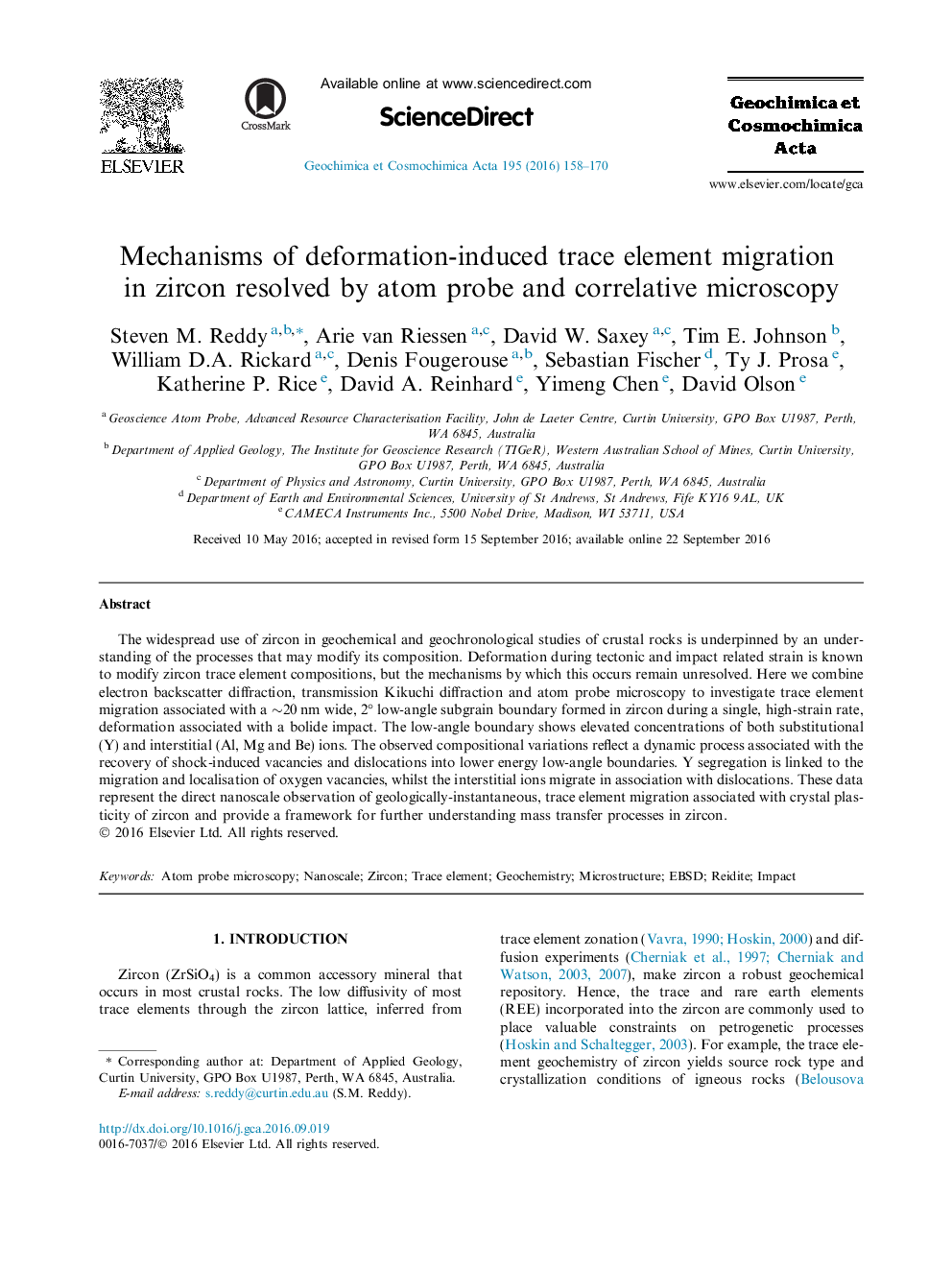| Article ID | Journal | Published Year | Pages | File Type |
|---|---|---|---|---|
| 6437070 | Geochimica et Cosmochimica Acta | 2016 | 13 Pages |
The widespread use of zircon in geochemical and geochronological studies of crustal rocks is underpinned by an understanding of the processes that may modify its composition. Deformation during tectonic and impact related strain is known to modify zircon trace element compositions, but the mechanisms by which this occurs remain unresolved. Here we combine electron backscatter diffraction, transmission Kikuchi diffraction and atom probe microscopy to investigate trace element migration associated with a â¼20 nm wide, 2° low-angle subgrain boundary formed in zircon during a single, high-strain rate, deformation associated with a bolide impact. The low-angle boundary shows elevated concentrations of both substitutional (Y) and interstitial (Al, Mg and Be) ions. The observed compositional variations reflect a dynamic process associated with the recovery of shock-induced vacancies and dislocations into lower energy low-angle boundaries. Y segregation is linked to the migration and localisation of oxygen vacancies, whilst the interstitial ions migrate in association with dislocations. These data represent the direct nanoscale observation of geologically-instantaneous, trace element migration associated with crystal plasticity of zircon and provide a framework for further understanding mass transfer processes in zircon.
